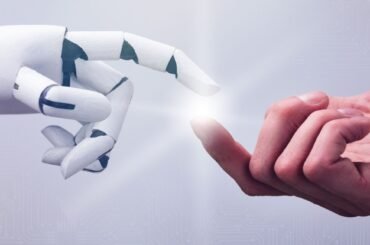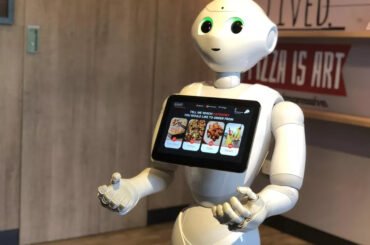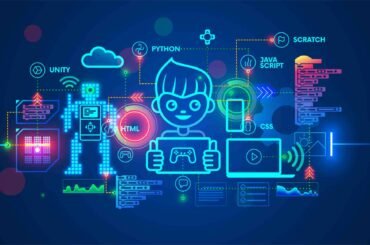Sophia, Stevie, Siri, Alexa, Pepper, Aibo and Han. What comes to your mind as we name some of these incredible Robots created by mankind? Brings a smile instantaneously isn’t it? And why not? These friendly machines are so unique and we love these as the world is learning to accept the value that these bring into our day to day interactions and the support they render to mankind.
It won’t be long before we see a wide range of robots walking about our workplaces, malls, hospitals, airports and homes, including AI enabled autonomous cars on streets and delivery or surveillance Robots in the form of Drones. Our Roboticists and leading firms are now investing lots of time and money on creating a future that is defined by Collaborative coexistence between Robots and Human beings. The big question however is how far are we geared towards embracing this inevitable change and how best will we be able to accommodate these marvelous machines as an integral a part of our social world.
For a real fact, Robots have already transformed manufacturing and are regular fixtures in hospital operating rooms, Surveillance and rescue operations, extreme terrain operations, and bomb disposal. However, how ready are we to receive these friendly machines as a regular, day to day co existing part of our lives is yet to be seen.
Robots bring about a mixed reaction among people when they come face to face with one. Awe, thrill, fear, inhibition, surprise and confusion are some as mapped by Robotists and researchers to understand human responses. It however is time that we gear up to embrace Robots as a regular feature of our day to day lives as Robots are here to stay!
Are Robots really that important? Do we really need Robots? These questions no more hold much credibility as the answer is a clear YES. The mixed reactions put up by people stem from a lot of factors: the overhyped portrayal of Robots in movies, media-fueled hype and partly a denial that Robots truly are here to stay and become one among us. This denial is a reaction to the fear about Robots taking over humanity as seen in movies and some series we have grown up watching. Star Wars/Ironman/I, Robot/Terminator etc. and similar movies have created a certain image on our impressionable minds and we fail to relate to the real purpose and reason why Robots are being designed and created. These over-rated expectations also have important implications for the robot-enabled future, beyond their immediate impact on human-robot interactions. Making lives better and tasks easier is the sole reason why Roboticists spend days and nights to create Robots which are of the closest semblance and sentience with humanity to make this collaboration and co-existence easier and worthwhile.
The important question now, however is, how do we treat Robots as these are to be an integral part of our lives in the near future. What day-to-day interactions do you expect to have with robots? How do you feel about the presence of artificial intelligence in your personal life, community or society for that matter? While the thought is quite interesting, it is a fact that we would take a while to absorb and assimilate the fast, upcoming new normal: Humans coexisting with Robots.
There have been cases reported where Robots have been abused and attacked by humans in the US, Japan and other continents for reasons varying from denial to an overpowering sense of supremacy. This of course comes at a huge cost, both to the creators and the community. On the other hand, there also have been cases where these Robots like the friendly Dog AIRO designed and marketed by Sony have been buried and a special committee created by disheartened owners of Airo to discuss how best they could overcome the challenges of being able to keep their adorable robot pet since Sony decided to shut down its last repair centre for Airo last year. Sentiments towards these machines, as we see are mixed, which is expected of anything which is new and game changing in nature.
Roboticists and Scientists who work closely with these friendly machines say, it is time to sit down and create a framework on how Human beings should conduct themselves around Robots for a peaceful coexistence.
The Robots are not machines that just dropped from the sky or appeared all of a sudden from a different planet. Robots are man made for specific purposes and these machines get as good as we make them. There is a deep-rooted interest in the Roboticists, scientists, engineers and investors to create robots that can duplicate emotions and develop capabilities to think as closely as human beings so that they make the best companions to live with.
Robotics as a line of study as per scientists and psycho analysists, is interdisciplinary and encompasses vast areas of sociology, linguistics, psychology and computer science. The Human Robot Interaction analysts and robot designers today are focused on creating robots that are more approachable and user-friendly. Both humans and Robots needs to anticipate behavioural outcomes of interactions and actions either ways, to avoid crossing lines or developing apathy towards each other.
Robots in science fiction, Terminator, Star Wars, Wall E or the Doctor Who TV series are superheroes, far more capable than currently available robot technology. Most of today’s robots, the Robomower, Roomba vacuum cleaner and the da Vinci surgical robot are made to perform and master only a single task.
People 65 and older make up the fastest-growing age demographic in the US. The growth of the eldercare workforce is not keeping pace. By 2030, there will be an estimated shortfall of 151,000 paid care workers in the US, according to one estimate. By 2040, that gap is projected to rise to 355,000. In the absence of qualified professional caregivers, an alternative care facility to help the aged adults with their daily living—which otherwise comes at great cost to their own financial and physical health, needs to be looked into.
It’s certainly a challenge to develop a technological solution for this problem that is cost-effective, supports human care workers without jeopardizing their jobs, and justifies the needs of aging people with utmost care.
There are many such areas where Artificially Intelligent Robotic counterparts are going to step-in and take charge as we have little alternatives. Having said this, it is important that we develop a humanistic approach towards Robots and accept that these are here to stay. It is thus imperative that we learn to be empathetic and gentle in the way we treat these friendly machines.
Abusing these friendly robotic counterparts may not have much impact on these but it does reflect poorly on our value system and character. Cruelty and abuse will only reflect on how poorly we have evolved as human beings. Learning to love and accept the Robots will only make the transition and assimilation into a technology driven interface more easier and effective.




